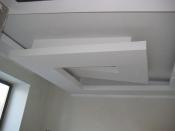Search
Login
Recommended
DIY retaining walls
The construction of the retaining wall is a fascinating process, during which you can realize the most diverse fantasies of landscape design.
This element of decor perfectly combines several functions.
Firstly, the presence of a retaining wall can significantly transform any area.
Secondly, this is a great way to visually divide the garden into zones.
Thirdly, retaining walls in the garden perform a protective function: strengthen the slopes, prevent the possible sliding of the soil in general, solve the problem of uneven terrain.
Not every owner of the site can boast a perfectly even relief, hence the conclusion: retaining walls are more likely a necessity than a tribute to design and fashion.
Content
- Retaining wall device
- Types of drainage of retaining wall
- Wooden retaining wall
- Stone retaining wall
- Concrete retaining wall
- Retaining wall design video
Retaining wall device
Retaining walls, at first glance, may seem like a jumble of material near the problem area. However, the design of the retaining wall is a kind of structure that combines the function of the support and drainage. Each such wall consists of three parts:
-
Foundation The underground part of the wall. It is she who accounts for the whole burden of soil pressure.
-
The body is the vertical part, which, in which case, will help prevent slipping.
-
The drainage system ensures the strength of the wall, removing all moisture from the soil.

Before making a retaining wall, it is necessary to make certain calculations. The design must be able to withstand a lot of pressure, otherwise there is a high probability of wall collapse and soil slipping. With a wall height of up to 1.5 meters, calculations can be done independently, using special programs. If the planned height is more than one and a half meters, then it is better to seek professional help.
Types of drainage of retaining wall
-
Filtration holes This drainage is suitable for walls made of stone and walls made of concrete blocks. In each 2 rows of masonry, one vertical seam is left unfilled with a solution (the interval between the seams is about 2 meters)
-
Broken bricks are laid out over the ground drainage behind the retaining wall (gravel or any other loose material is also suitable), and hollow blocks of the block wall are filled with small gravel.
-
Underground drainage A perforated drainage pipe is wrapped in a special geotextile material and placed in the base of the retaining wall. Through this pipe, the accumulated water is discharged into the drainage well.
Wooden retaining wall
Retaining walls made of wood are the easiest to build. Smooth logs are selected for them, trunk diameters of up to 20 cm. The lower part (the one that will be driven into the ground) is processed in order to prevent decay; you can use either special impregnation or machine oil, heated bitumen. The logs are pressed tightly against each other and driven into the ground. The minimum entry depth is 0.4 - 0.5 meters, this will allow the structure to stand reliably.

You can also build a wall of horizontally mounted logs. To do this, dig a trench, crushed stone is laid at the bottom, the bottom row of logs is fastened to the ground using reinforcement. Next, the wall is laid out directly, the logs are fixed with screws.

Stone retaining wall
Retaining walls made of natural stone are not so common in landscape design. The main reason is the complexity of the process and the cost of the material. The foundation wall of this type needs concrete, or, if the height is small, use dry masonry from large stones.
First you need to dig a trench, adding 10 cm to the width of the foundation to its width. The trench should exactly repeat the contour of the building. Next, fill the foundation, and after it hardens, spread the stones. When masonry is carried out in a dry manner, garden soil is laid in the resulting gaps and plants are planted. In the case of cement mortar, the joints are filled with grout mixture.

A very important point is the method of laying stones. First of all, the wall must be strong, which means that it is better to refuse to lay the stone one on top of the other (with the formation of cruciform seams). Instead, it is better to use the classic version, when the joints between the stones above and below overlap with the middle of the stone of the corresponding row, this will provide the construction with durability and strength.
Concrete retaining wall
Perhaps the main advantage of a concrete retaining wall is its durability. True, if we are talking about a monolithic design, then to give a beautiful look, facing will be required. The retaining wall of the blocks is aesthetically pleasing in itself and does not require additional decoration.

At the beginning of the work, it is necessary to dig a trench: the higher the planned wall, the greater the depth of the trench. At the bottom lay a pillow of gravel and rubble, then the reinforcement, after the formwork is removed. Concrete is poured evenly into the finished structure. You can remove the formwork after 5 days. The finished wall is aligned and decorated.
Retaining wall design
In order for the retaining wall to look organically on the site, it is important that it fits into the overall interior of the garden. A competent combination of materials and shades will help to avoid mistakes. For example, if most of the structures on the site are made of wood, then it is better to give preference to a wooden retaining wall.

There are also many ways to decorate retaining walls. The most diverse version of the plant. It is better to refuse tall bushes and trees - this will give the composition a heavy look, but ground cover plants are able to elegantly emphasize this bend of the landscape. You can arrange an artificial pond on the background of the retaining wall, as well as a small alpine hill, just remember to make a separate drain for it, this will provide the plants with better growth.





